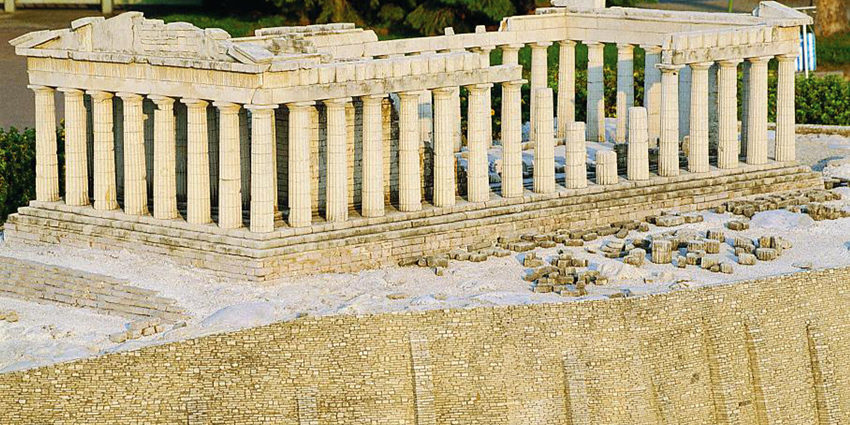The Acropolis, whose buildings represent the most famous testimony to classical Greek culture, towers above the centre of Athens. From time immemorial, the rocky hill had been built upon but the edifice, that can be seen today, dates back to the 5th century BC and the time of Pericles. He commissioned the best architects to build the most magnificent temple which had ever been seen to the glory of the goddess Athena. He was said to have spent the equivalent of 30,000 kg of gold for the architects’ plans to be carried out. Around 22,000 t of marble had to be shipped for the Parthenon alone, the largest temple (and the only one currently on display at Minimundus). Following Greece’s Christianization, the Parthenon was converted into a Christian church and after Athens’s capture by the Turks in the 15th century, it became a mosque. In the 17th century, the central part of the Parthenon, which was used as a powder magazine, was reduced to ruins when the Venetians in turn besieged the Turks. Today the ruins are at such a risk from air pollution that the most valuable parts (as they are not in the British Museum in London, like the Elgin marbles) have been replaced by copies and are now on display in the National Archaeological Museum. In the 1930s, renovation work was carried out to preserve these impressive buildings for many further generations. Iron clamps were used, but their corrosion damaged the buildings even more. Some elements were even built in at the wrong place. To correct these mistakes, a new, ambitious restoration programme was begun in the 1980s. Currently, conservation and restoration of the Parthenon are still in progress. Once the repairs have been carried out, the Parthenon shall present itself more complete than before.

